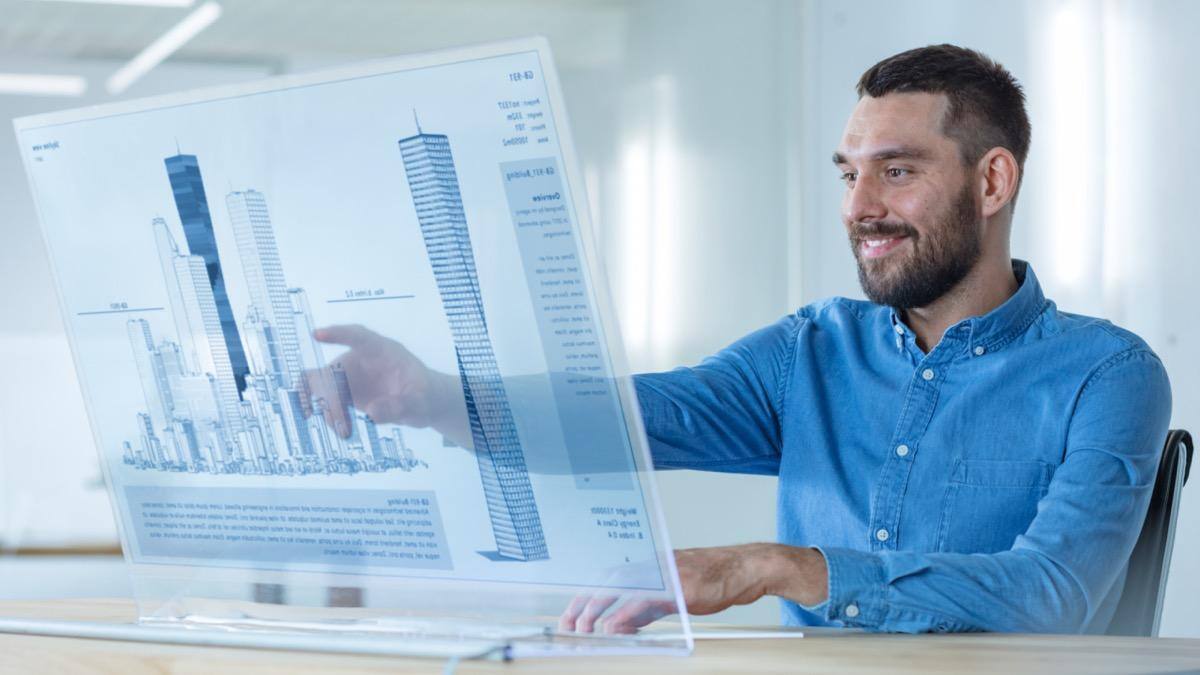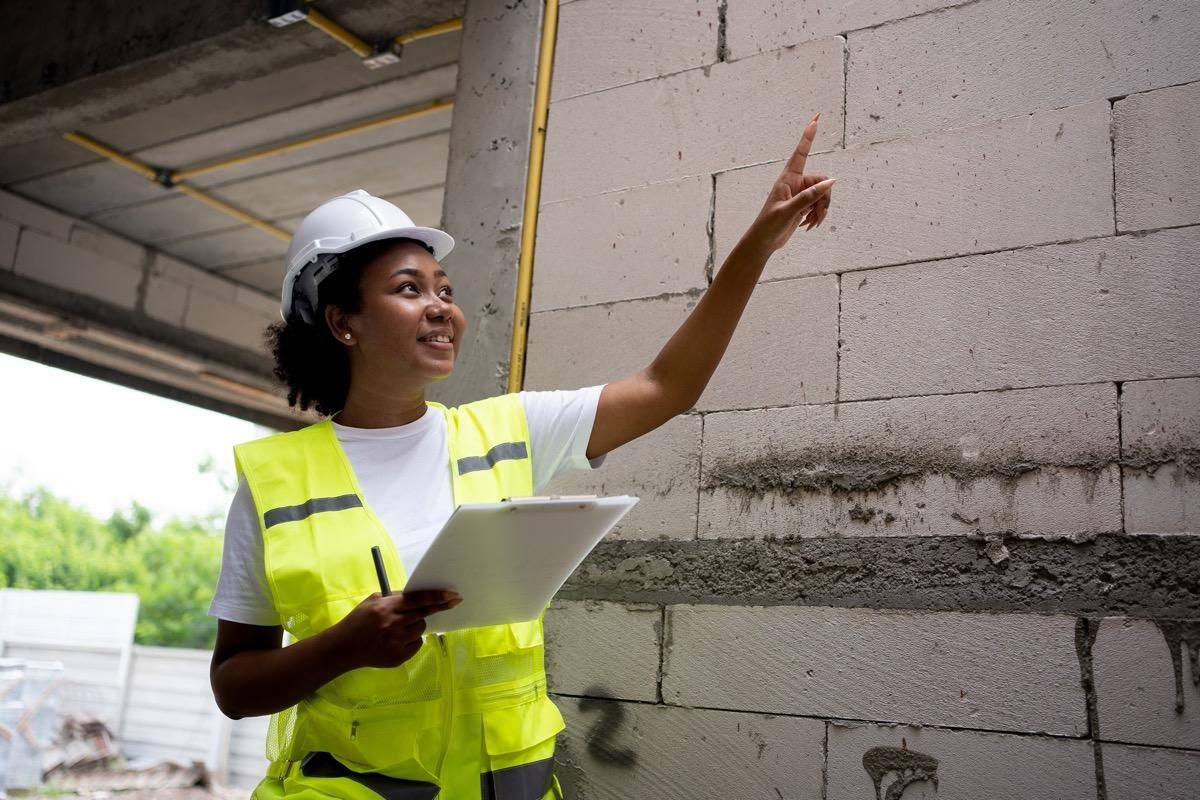The Future of Construction Is Digital: 3 Evolving Technologies to Follow
In this series so far, we’ve talked about the role of cloud-based software in construction and how construction companies can replace their legacy systems with those kinds of tools.
Below, we explore three evolving technologies that are transforming the construction sector by paving the way for increased efficiency and safety.
Table of Contents
Generative Design
Generative design relies on the same kind of artificial intelligence (AI) technology that ChatGPT and Midjourney use.
The idea is simple enough: Tell the AI what kind of visual thing you would like it to create, and it will — to the best of its ability, anyway. If you ask AI to design a skyscraper, it has to know what a skyscraper looks like. And it takes a lot of images of skyscrapers for AI to achieve that knowledge.
This is exactly what architects and designers are teaching these tools to do right now. At this stage, the technology cannot mock up a finished design, but it is useful for brainstorming design ideas.
“[T]he designer can run numerous tests and learn from each iteration what works and what doesn’t,” investor and advisor Dimitris Farmakis writes at Construction Executive.
“That way, the designer has the best chance to arrive at the most effective and optimized design. Nature’s evolutionary approach (genetic variation and selection) works in a very similar way and has resulted in the emergence of a world of creatures optimized for their specific environments.”
In practical terms, this capability can do a lot for designers. Mike Anderson at One-Key has a nice rundown of what those are:
- Providing architects with a starting point that they can edit.
- Saving designers time by frontloading the work with ideas and choices, which only need to be pared down.
- Automatically generating features that otherwise require tedious, painstaking design work.
As noted, however, generative design relies on big sets of data, and this reveals some of the current downsides of the technology. As the team at UGREEN in Brazil writes, some challenges that remain include integrating generative design tools with other software, ensuring data are accurate, and ensuring bias doesn’t creep into the image-generation process.
That last point is important. We’ve already seen how other types of generative AI can repeat the biases present in their input data.

Digital Twins and Building Information Modeling
An exciting development in the field of building information modeling (BIM) is the idea of the digital twin, which functions as a 1:1 digital replica of a physical object.
“The use of these digital twins enables more efficient communication between architects, engineers and contractors during the pre-construction phase while simplifying ongoing operations throughout the life cycle of a building or structure,” the team at PBC Today writes.
“By combining detailed information about existing structures with real-time feedback from on-site sensors, digital twins offer unprecedented visibility into projects before they are built.”
So, what can construction companies and their partners do with this kind of visibility? Many things, in fact. As University of Kentucky engineering students Ashtarout Ammar and fellow researchers outline in a 2022 article for the journal Frontiers in Built Environment, there are some particularly important benefits to pay attention to.
- Digital twins let you model what-if scenarios. The researchers note how digital twins allow building managers to visualize things like social distancing options for building occupants, and how those occupants use the oxygen in the building. That might have sounded esoteric before 2020, but now we know how useful that information could be during future pandemics.
- Digital twins let you deploy building material resources only when needed. The technology “can serve as a decision support system that enables construction players to make sure materials are available on-site to use when needed based on real-time data that shows where materials are being used and how much more is needed and when to eliminate delays and reduce operational costs,” the researchers write.
Again, this is a data-rich technology that has some of the same vulnerabilities as generative AI. Further, actual building data can be sensitive information. Safeguarding that data is crucial. This is why the PBC Today team suggests certain safeguards when working with digital twin technologies. These include strong encryption of data, access controls for users, firewalls and intrusion-detection systems.

Wearables
Wearable technology continues to be a hit-or-miss field both in the construction sector and elsewhere. Wireless headphones have been a hit. Google Glass wasn’t.
Consumer devices aside, wearables continue to prove useful on construction sites. “[W]earable technologies like AR smart glasses can be seamlessly integrated with work instructions and remote assistance software to provide real-time access to information and guidance to frontline workers,” writes Chirag Yadav at Plutomen, a company that makes this kind of technology.
“Wearables can also reduce the need for manual documentation and streamline communication between workers, resulting in faster problem-solving and decision-making. Additionally, remote assistance capabilities can help workers receive guidance from experts in real-time, improving their confidence and reducing errors.”
But worker safety might prove the most useful application of this technology. As the team at Openwage writes, construction companies can equip their field crews with wearable devices that monitor people’s vital signs, detect accidents in real time, detect abnormal gas levels, and send alerts to the wearer or workers elsewhere during an emergency.
This technology is also being integrated into things field crew already wear. Attorney Howard Frederick explains at Industrial Safety & Hygiene News, that construction crews have access to:
- Smart hard hats that monitor the wearer’s fatigue levels.
- Smart safety vests that monitor the wearer’s vitals.
- Smart safety glasses that can alert the wearer to nearby hazards.
There’s another bottom-line benefit to wearables. “Use of wearable technology can give vital insight into a company’s entire operations,” WorkMax cofounder Mike Merrill writes. “For one, wearables can track patterns in worker movement and equipment usage to determine dips and increases in productivity.”
The challenge with wearables is privacy. Do your field crews want to have their vitals (and their locations and their productivity) monitored in real time? Should employers have that capability? Expect companies to wrestle with these questions over the next several years.
Get Your Business Ready for a Data-Driven Future
The throughline in all of these technologies is data. Construction businesses have to be adept at collecting, storing and managing their data if they want to unlock the capabilities of these tools.
Important steps along the journey toward becoming a digital construction company are digitizing your construction project documentation, centralizing that documentation and embracing cloud-based project management.
To learn how eSUB can help your team digitize that work, schedule a demo today.
Images used under license from Shutterstock.com.

